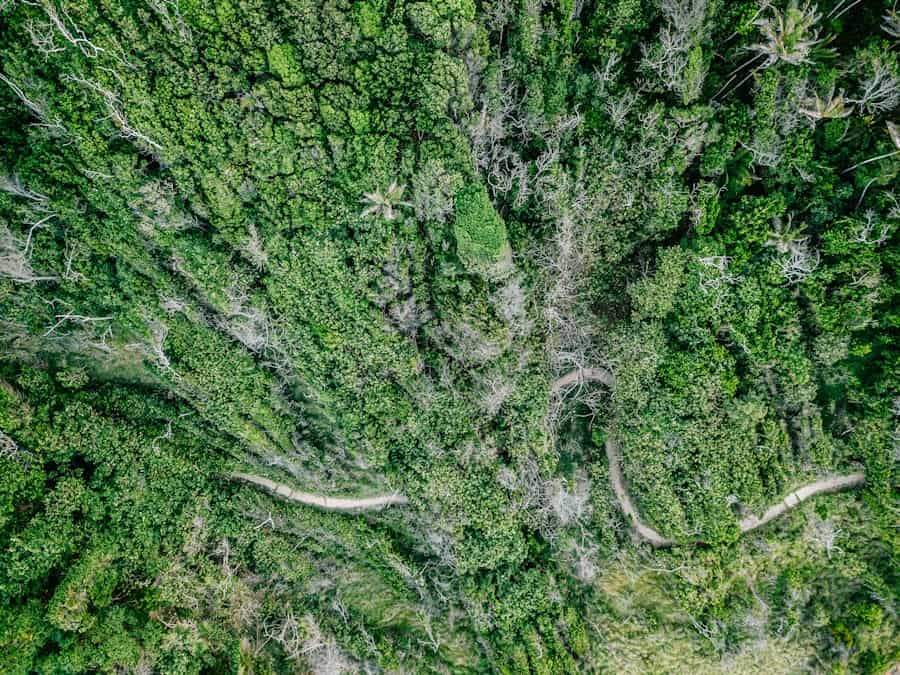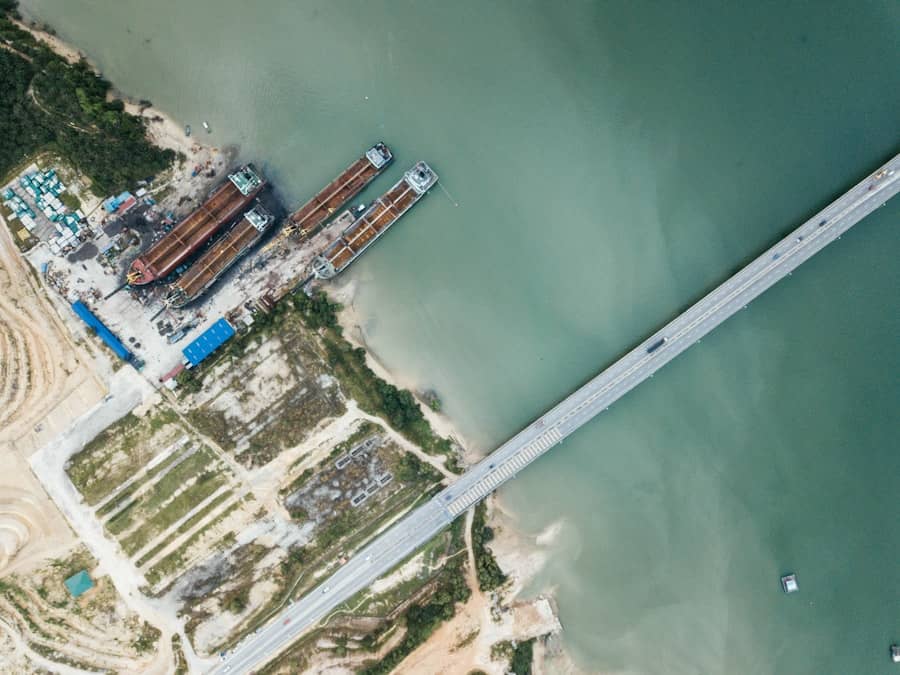The advent of drone technology has revolutionized various fields, from cinematography to agriculture, surveillance, and beyond. One of the most compelling features of modern drones is their ability to capture high-quality video footage from unique aerial perspectives. However, the challenge of maintaining focus on a moving subject while navigating the complexities of aerial filming has led to the development of automatic subject tracking systems.
These systems utilize advanced algorithms and technologies to ensure that the camera remains locked onto a designated subject, regardless of its movement or the drone’s position. This capability not only enhances the quality of the footage but also allows operators to concentrate on other critical aspects of flying and filming. Automatic subject tracking is particularly beneficial in dynamic environments where subjects may be moving unpredictably.
As drones become more integrated into various industries, the demand for sophisticated tracking systems has surged, prompting researchers and developers to explore innovative solutions that leverage artificial intelligence (AI) and machine learning technologies.
Key Takeaways
- Automatic subject tracking for drone videos is a cutting-edge technology that uses AI to track and follow subjects in real-time.
- AI plays a crucial role in subject tracking for drone videos by enabling the drones to autonomously track and follow subjects with high accuracy.
- AI technology enhances subject tracking accuracy by utilizing advanced algorithms to analyze and predict the subject’s movements.
- Machine learning plays a key role in improving subject tracking for drone videos by enabling the AI to learn and adapt to different tracking scenarios.
- Using AI for automatic subject tracking in drone videos offers advantages such as improved tracking precision, real-time tracking, and the ability to track multiple subjects simultaneously.
The Importance of AI in Subject Tracking for Drone Videos
Artificial intelligence plays a pivotal role in enhancing the capabilities of automatic subject tracking systems for drone videos. Traditional tracking methods often relied on basic algorithms that could struggle with complex scenarios, such as occlusions or rapid movements. AI introduces a new level of sophistication by enabling drones to analyze video feeds in real-time, identify subjects, and predict their movements with remarkable accuracy.
This capability is crucial in applications where precision is paramount, such as in wildlife monitoring or sports broadcasting, where every moment counts. Moreover, AI-driven subject tracking systems can adapt to various environments and conditions. For example, in a crowded urban setting, a drone equipped with AI can distinguish between multiple moving subjects, focusing on the one that has been designated for tracking.
This adaptability is essential for ensuring that the drone can operate effectively in diverse scenarios without requiring extensive manual input from the operator. The integration of AI not only streamlines the tracking process but also enhances the overall user experience by reducing the cognitive load on drone pilots.
How AI Technology Enhances Subject Tracking Accuracy
AI technology significantly enhances subject tracking accuracy through advanced image processing techniques and predictive modeling. By employing deep learning algorithms, drones can analyze vast amounts of visual data to recognize patterns and features associated with specific subjects. For instance, convolutional neural networks (CNNs) are commonly used in image recognition tasks, allowing drones to identify and track subjects based on their unique characteristics, such as color, shape, and movement patterns.
In addition to recognizing subjects, AI systems can also predict their future positions based on historical movement data. This predictive capability is particularly useful in scenarios where subjects exhibit erratic behavior or sudden changes in direction.
This level of accuracy not only improves the quality of the footage but also reduces the likelihood of losing track of the subject during critical moments.
The Role of Machine Learning in Improving Subject Tracking for Drone Videos
Machine learning is a subset of AI that focuses on enabling systems to learn from data and improve their performance over time. In the context of automatic subject tracking for drone videos, machine learning algorithms can be trained on large datasets containing various scenarios and subjects. This training process allows the system to develop a nuanced understanding of how different subjects behave under various conditions, leading to improved tracking performance.
For example, a machine learning model could be trained using thousands of video clips featuring different types of moving objects—ranging from athletes running on a field to animals roaming in their natural habitats. By analyzing these clips, the model learns to recognize key features and movement patterns associated with each type of subject. As a result, when deployed in real-world situations, the drone can leverage this learned knowledge to track subjects more effectively, even in unfamiliar environments.
Furthermore, machine learning enables continuous improvement through feedback loops. As drones capture more footage and encounter new scenarios, they can refine their tracking algorithms based on real-world performance data. This iterative learning process ensures that subject tracking systems become increasingly robust and reliable over time.
Advantages of Using AI for Automatic Subject Tracking in Drone Videos
The advantages of utilizing AI for automatic subject tracking in drone videos are manifold. One of the most significant benefits is the enhancement of operational efficiency. With AI-driven systems handling the complexities of tracking, drone operators can focus on other critical tasks such as navigation and composition.
This efficiency is particularly valuable in fast-paced environments where quick decision-making is essential. Another advantage is the improvement in video quality. AI-powered tracking systems can maintain focus on subjects even during rapid movements or when they are partially obscured by obstacles.
This capability results in smoother footage that captures every detail without abrupt shifts or loss of focus. In industries such as filmmaking or sports broadcasting, where high-quality visuals are paramount, this improvement can have a substantial impact on the final product. Additionally, AI-driven subject tracking systems can enhance safety during drone operations.
By automating the tracking process, operators can reduce their workload and minimize distractions while flying. This increased focus allows for better situational awareness and reduces the risk of accidents or collisions with other objects or obstacles.
Challenges and Limitations of AI in Subject Tracking for Drone Videos
Data Quality and Availability
One significant hurdle in implementing AI in automatic subject tracking for drone videos is the need for high-quality training data. Machine learning models rely heavily on diverse datasets to learn effectively; however, obtaining such data can be time-consuming and resource-intensive. In many cases, specific scenarios may not be well-represented in existing datasets, leading to potential gaps in performance when encountering unfamiliar situations.
Environmental Factors Affecting Tracking Accuracy
Environmental factors can also affect tracking accuracy. Adverse weather conditions such as rain, fog, or low light can hinder a drone’s ability to capture clear video footage. Even advanced AI algorithms may struggle to maintain accurate tracking due to reduced visibility or interference from environmental elements. Rapid changes in lighting conditions, such as those experienced during sunrise or sunset, can also pose difficulties for subject recognition and tracking.
Computational Limitations and Efficiency
There are also concerns regarding computational limitations. While modern drones are equipped with powerful processors capable of handling complex algorithms, there are still constraints related to battery life and processing power that can impact real-time performance. As AI algorithms become more sophisticated and require greater computational resources, striking a balance between performance and efficiency remains an ongoing challenge.
Future Developments and Innovations in AI for Subject Tracking in Drone Videos
The future of automatic subject tracking for drone videos is poised for significant advancements driven by ongoing research and technological innovations in AI and machine learning. One promising area of development is the integration of enhanced sensor technologies that can provide richer data inputs for tracking algorithms. For instance, combining visual data with other sensor modalities—such as LiDAR or thermal imaging—could improve tracking accuracy in challenging environments where traditional cameras may struggle.
Additionally, advancements in edge computing are likely to play a crucial role in enhancing real-time processing capabilities for drones. By enabling data processing directly on the drone rather than relying solely on cloud-based solutions, edge computing can reduce latency and improve responsiveness during flight operations. This capability would allow drones to make quicker decisions regarding subject tracking while maintaining high levels of accuracy.
Furthermore, as AI continues to evolve, we may see the emergence of more sophisticated algorithms capable of understanding complex interactions between multiple subjects within a scene. This development could lead to improved performance in crowded environments where distinguishing between various moving objects becomes increasingly challenging.
The Impact of AI on the Future of Automatic Subject Tracking for Drone Videos
The integration of artificial intelligence into automatic subject tracking systems for drone videos marks a transformative shift in how aerial footage is captured and utilized across various industries. As technology continues to advance, we can expect even greater improvements in accuracy, efficiency, and adaptability in subject tracking capabilities. The potential applications are vast—from enhancing cinematic storytelling to improving safety measures in search and rescue operations.
As researchers continue to explore innovative solutions and overcome existing challenges, the future holds exciting possibilities for automatic subject tracking technology powered by AI. The ongoing evolution of this field will undoubtedly shape how we perceive aerial videography and its applications across diverse sectors, ultimately leading to richer visual experiences and more effective operational outcomes.
In a related article on top trends on Instagram for 2023, the impact of AI in shaping social media content and engagement is discussed. Just as AI plays a crucial role in automatic subject tracking for drone videos, it also influences the way content is created and shared on popular platforms like Instagram. Understanding these trends and utilizing the best software for social media content creation, as outlined in this comprehensive guide, can help businesses stay ahead in the digital landscape. Additionally, platforms like How-To Geek, an online technology magazine, provide valuable insights into the latest advancements in AI and other tech-related topics, as highlighted in this article.
FAQs
What is automatic subject tracking for drone videos?
Automatic subject tracking for drone videos is the use of artificial intelligence (AI) to identify and track specific subjects or objects within a video captured by a drone. This technology allows drones to autonomously follow and keep a subject in focus without the need for manual control.
How does AI play a role in automatic subject tracking for drone videos?
AI plays a crucial role in automatic subject tracking for drone videos by utilizing computer vision algorithms to analyze the video feed in real-time. These algorithms can identify and track subjects based on various visual cues such as shape, color, and motion, allowing the drone to adjust its position and orientation to keep the subject in frame.
What are the benefits of using AI for automatic subject tracking in drone videos?
Using AI for automatic subject tracking in drone videos offers several benefits, including improved accuracy and precision in tracking moving subjects, reduced reliance on manual control, and the ability to capture dynamic and engaging footage for various applications such as filmmaking, sports coverage, and surveillance.
Are there any limitations or challenges associated with AI-based automatic subject tracking for drone videos?
While AI-based automatic subject tracking for drone videos has advanced significantly, there are still limitations and challenges to consider. These may include difficulties in tracking subjects in complex or crowded environments, potential privacy concerns related to surveillance applications, and the need for ongoing algorithm refinement to enhance tracking performance.



